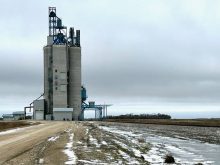Canadian farmers are expected to take area out of summerfallow this spring for more acres of almost all major grains, oilseeds, pulses and special crops, the federal agriculture department said Friday.
Canada’s total 2015-16 crop production is forecast to rise, due mainly to higher seeded area, due in turn to lower area in summerfallow and “significantly” lower carry-in stocks, Agriculture and Agri-Food Canada said in its field crops outlook.
Grain and oilseed production for the new crop year is forecast to rise by four per cent to 76.8 million tonnes, though exports and domestic use are expected to decrease due to lower supply, AAFC said. Carryout stocks are expected to decrease to 8.8 million tonnes, well below the 10-year average of about 13.5 million tonnes.
Read Also

U.S. livestock: CME cattle tick lower in thin pre-holiday trade
Chicago | Reuters – Chicago Mercantile Exchange live and feeder cattle futures were little changed but ended slightly lower on…
Pulse and special crop production is forecast to increase by 11 per cent to 6.7 million tonnes, but exports are expected to be marginally lower, AAFC said. Carryout stocks are forecast to increase to 730,000 tonnes, down from the 10-year average of about 900,000.
Canola acres in 2015-16 are expected to rise by two per cent on “competitive” prices relative to other Prairie field crops.
“Warm late winter temperatures and a small snow cover are creating expectations of an earlier than normal start to seeding,” AAFC oilseed analyst Chris Beckman wrote Friday. “Early seeding, followed by good germination, benefits canola as it leads to early flowering during the cooler part of the summer. This reduces heat stress, dropped blooms and increases yields, all other things being equal.”
Canola production is forecast to rise by three per cent to 16 million tonnes, based on expected normal yields, but supply is expected to drop by three per cent due to lower carry-in stocks.
Canada’s soybean area is expected to rise by four per cent in 2015-16 to a record 5.8 million acres on “relatively attractive prices and yield stability compared to alternate crops,” AAFC said.
Soybean planting in Eastern Canada may be delayed due to a winter of below-normal temperatures and above-normal snowfall, though in Western Canada, the warm spring may lead to earlier than normal planting. Production across Canada is forecast to rise by 10 per cent, to 6.65 million tonnes.
Spring wheat acres are forecast to rise by three per cent, mainly because soaked areas of western Manitoba and eastern Saskatchewan weren’t seeded in 2014-15. Winter wheat acres for 2015-16 fell by 33 per cent due to the late harvest, AAFC said. Wheat production is forecast to decrease marginally to 24 million tonnes.
Durum acres in 2015-16, meanwhile, are expected to rise by nine per cent on high prices in 2014-15 and low carry-in stocks; durum production is expected to rise six per cent, to 5.5 million tonnes.
“More normal”
Corn area is expected to increase by six per cent from 2014-15, due to higher prices and residual area in Eastern Canada that wasn’t seeded to winter wheat this past fall, AAFC said. Corn production is forecast to increase to 12.2 million tonnes, up six per cent.
Barley acres are forecast to rise by nine per cent from 2014-15, “due to a return to more normal seeding conditions and a reduction in summerfallow on the Prairies,” AAFC said. Production is forecast to increase 11 per cent to 7.9 million tonnes on higher area and expected average yields.
Flax area in 2015-16 is forecast to increase by 11 per cent on “attractive returns versus cereal crops, and lower input costs compared to canola,” but may be “constrained slightly” due to the early spring, if farmers decide to switch to longer-season crops. Slightly higher yields are expected to boost flax production to 980,000 tonnes, up 15 per cent.
Dry pea and lentil areas are expected to rise to 3.95 million and a record 3.46 million acres respectively, with tonnage rising by 10 and 17 per cent respectively.
Rye acres are expected to jump eight per cent from 2014-15 levels, but will still be near record lows, while production is expected to increase by 23 per cent.
Oats acres and tonnage are forecast to increase 10 per cent from 2014-15 on “competitive” pricing, a return to more normal seeding conditions, expected average yields and less summerfallow on the Prairies.
Mustard is one of the few crops expected to decrease in 2015-16 acreage, due to lower returns from this year, AAFC said. Production is expected to drop by 14 per cent to 170,000 tonnes, but supplies are seen dropping “marginally,” however, on larger carry-in stocks. — AGCanada.com Network
















